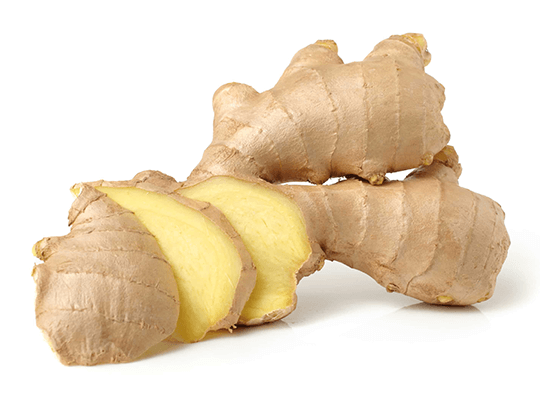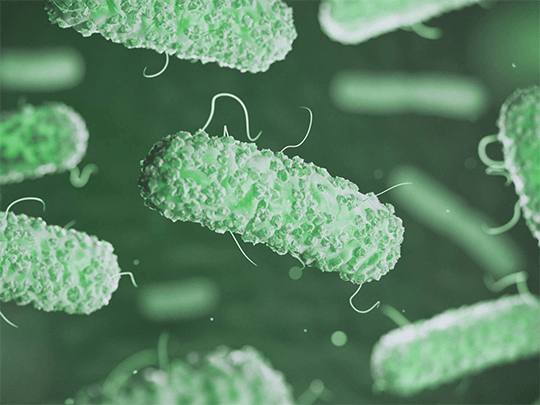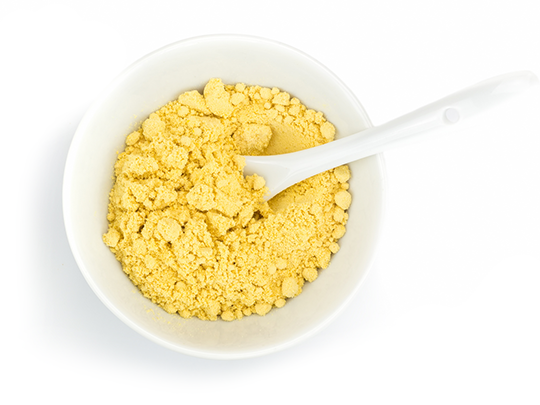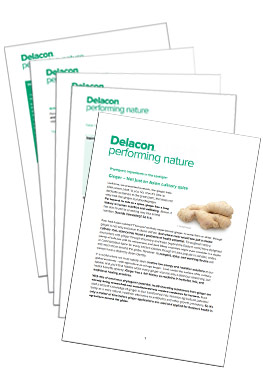Ginger – Not just an Asian culinary spice (part 4)
Discover with us the effect of ginger on respiratory functions and learn more about this miracle root in this fourth part of our mini-series.
Discover gingers’ power to support respiratory functions
Have you already read part 1, 2 and 3 of our mini-series about the wonderful root ginger? Great, then you can now answer the questions: Where does ginger come from? What influence does ginger have on meat quality and what does ginger have to do with inflammation? But can you also tell me what influence ginger has on the respiratory system?
What to discover about ginger in this part?
- insights in gingers’ supportive functions on the respiratory tract
- influence of ginger on the gastrointestinal tract
- and much more….
The anti-inflammatory effect of ginger can do more:
it not only has the affects as described in part 3, it also offers support in the treatment of asthma, which is a long-term inflammatory disease of the respiratory tract (Townsend et al., 2013, 2014). Ginger and its bioactive compounds have been shown in several studies to have bronchodilating activity and antihyperactivity (Mangprayool et al., 2013). Experiments with humans showed that especially [6]- and [8]-gingerol, as well as the active substance [6]-shogaol of ginger caused a significant and rapid relaxation of the isolated smooth muscles of the respiratory tract (Townsend et al., 2013)

In addition, Khan et al. (2015) showed that dietary intake of ginger in ovalbumin-induced allergic asthma in mice improved allergic asthma by reducing allergic respiratory inflammation and suppressing Th2-mediated immune responses. In addition, the water-extracted polysaccharides of ginger have been shown to reduce the frequency of coughing caused by citric acid in guinea pigs (Bera et al., 2016). Mangprayool et al. (2013) could show that ginger oil and its bioactive compounds, including citral and eucalyptol, inhibited carbachol-induced contraction of tracheal function in rats. These results suggest that ginger and its bioactive compounds, including [6]-shogaol, [6]-gingerol and [8]-gingerol, citral and eucalyptol, have protective properties against respiratory diseases. At the very least, ginger appears to strengthen the respiratory tract by inducing smooth muscle relaxation and reducing inflammation (Mao et al., 2019).
Influence of ginger on the gastrointestinal tract

Enteric bacteria like enterotoxin producing Escherichia coli (ETEC), Vibrio cholera, Campylobacter spp., Salmonella typhi, or Shigella flexneri are a global problem as they can cause major health concerns. Especially diarrhea is often associated with these pathogens. One of the main reasons for their pathogenicity is the production of toxins, for example cholera toxin from V. cholera or heat-labile enterotoxin from E. coli. These toxins cause damage in the intestinal tract by binding to cell-surface receptors on the intestinal epithelial cells and cause a disturbance in the fluid balance of the body, which results in diarrhea. It is known for example, that the GM1 ganglioside is the target for enterotoxins in the intestine. In a study with mice, ginger blocked the binding of heat-labile enterotoxin to this receptor.This led to an inhibition of fluid accumulation in the closed ileal loops of the animals (Chen et al.,2007). The authors of this study suggest, that zingerone could be responsible for this antidiarrheal effect of ginger.

Anthelmintic effects of ginger
Ginger is also effective by reducing colonization of epithelial cells by intestinal pathogens (e.g. enteropathogenic E. coli, enteroinvasive E. coli) and is also involved in the inhibition of production of cholera toxins (Daswani et al. 2010). Besides bacterial pathogens, ginger has demonstrated anthelmintic effects in preclinical studies against human Ascaris lumbricoldes (Kalesaraj, 1974), Anisakis larvae (Goto et al., 1990) and Haemochus contortusa, which is a pathogenic ruminant nematode (Iqbal et al.,2001). Ginger also provided anthelmintic activity in sheep, thus justifying the age-old traditional use of this plant in helminth infestation (Iqbal et al., 2006).
However, ginger is not a “golden bullet” capable to deal with all sorts of problems.

For example in the already mentioned in vitro study of Daswani et al. (2010), entry of the simian rotavirus S11 into MA-104 cells and the viability of Giardia lamblia trophozoites were not affected by a decoction of ginger at all. And although ginger has repeatedly demonstrated its antibacterial effect on sensitive and drug-resistant bacteria (Khan et al., 2010; Mascolo et al. 1989; Thongson et al.,2005) as well as its essential oil being effective in certain pathogens (Friedman et al., 2002), it also shows ineffective results, like in a study with strains of enteropathogenic E. coli, V. cholerae, and S. flexneri (Daswani et al., 2010).
Ginger can affect intestinal morphology and function
In addition to gingers effects on the intestinal microbiota, it can also affect intestinal morphology and function. When ginger (0.05%) was being fed to Wistar rats over a period of 8 weeks, it could increase the fluidity of the brush border membrane in the jejunal and ileal regions by decreasing the cholesterol-phospholipid ratio. The microvilli length and perimeter were increased, resulting in a larger absorptive surface, which may be co-responsible for the beneficial effects (Prakash and Srinivasan, 2010a). Therefore it can be concluded that ginger and its compounds can be useful against a range but not all bacterial, viral and parasitic problems. However, due to possible selective influence it may beneficially influences the gastrointestinal ecosystem through inhibition of microbial pathogens

According to Mekuriya and Mekibib (2018), ginger also helps to improve the absorption of essential nutrients. Ginger also showed effects on the contraction and motility of the reticulum and rumen in ruminants’ studies. Results of an in vivo study demonstrated that hydroalcoholic extract of ginger (containing spasmogenic and spasmolytic constituents) may have a stimulant effect on reticulorumen motility in a 40mg/kg concentration (Mamaghani et al., 2013). Biswas et al. (2017) recently demonstrated the ameliorative effect of ginger powder against experimentally induced arsenic toxicity in calves. This reveals a potential of ginger to support the body against some forms of intoxication and improve resilience against damage caused by these toxins.
Do you want the entire article as PDF including all references?

You are only one click away.
The multitude of beneficial effects observed in studies using ginger demonstrate the highly interesting potential of phytogenics.
They can be added to a healthy diet for humans and animals. In livestock production feeding of phytogenic feed additives that include many precious bioactive compounds from plants may contribute to reduce the use of antimicrobial growth promoters such as antibiotics and zinc oxide. This would greatly add to protect the environment and reduce the risk of antibiotic resistance development. Our message for you: whenever colds are the order of the day, it´s time to resort to herbal helpers that can support your immune system in a natural way…Ever tried ginger syrup? No? Then it´s high time!!

Elisabeth Rohrer
After her study in agriculture sciences at the university of natural resources and life sciences in Vienna, Elisabeth joined the Delacon team in December 2013 as Technical Communications Manager - a position, she always exerted with pleasure. Since 2021, her task areas have been extended and thus, she is also supporting colleagues in writing offside the technical focus as Content Manager. Elisabeth describes herself as a great animal and nature lover and prefers to spend her free time high up in the mountains with her little family, away from the hustle and bustle.

Anne Oberdorf
Anne has always been fascinated by the unknown, the diversity and beauty of nature. Her love for nature brought her to Delacon in 2018 after studying agricultural sciences, where she worked as Technical Communications Manager and later as Product Manager Aquaculture. Since February 2021, she has been taking a new, natural career path outside of Delacon.










